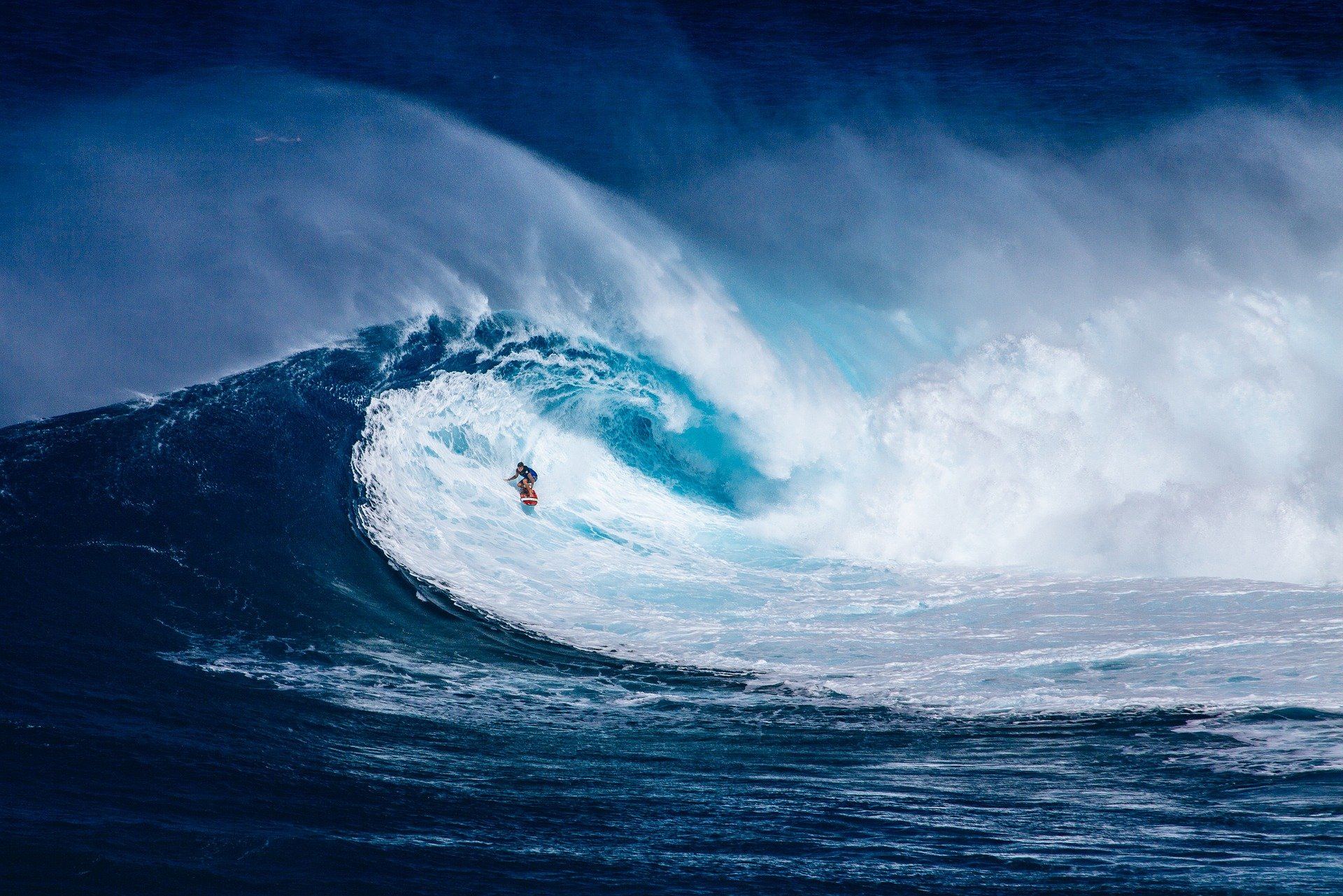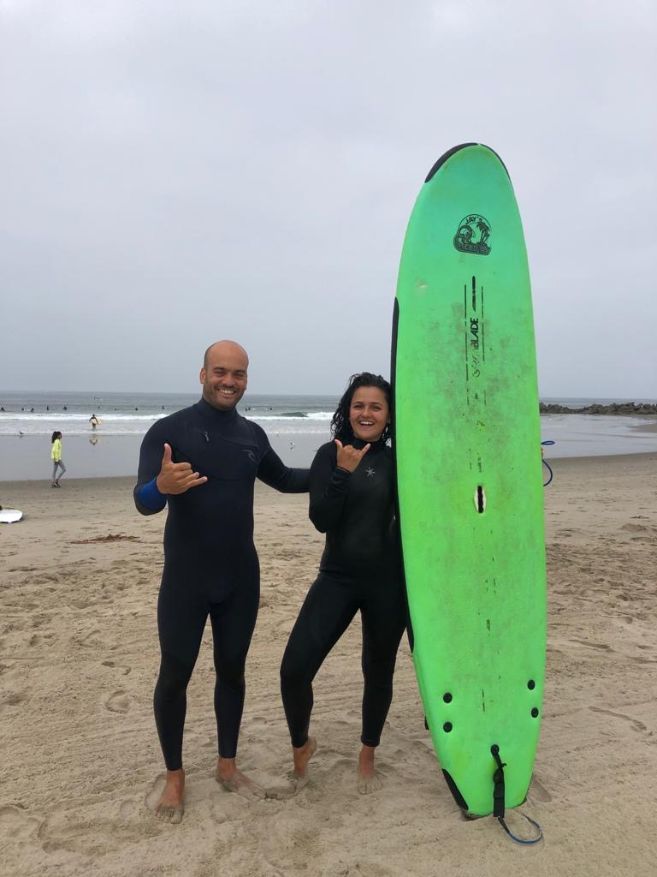
Who doesn’t love a relaxing vacation by the ocean? It’s an excellent opportunity to learn a new sport. And nothing can be more enjoyable than surfing when it comes to the ocean, sand, and the sun!
The season is getting closer and closer. If you are thinking about booking for a surf trip or even getting a single lesson, here’s what people usually do for their first time at the beach and in the water.
DIVE IN WITH AN UNCLUTTERED MIND AND A POSITIVE ATTITUDE
When it comes to trying out something unusual for the first time, it’s normal to be nervous and worried.
The same goes for studying how to surf for the first time.
Before you start your surf trip, it’s essential to join your first surf lesson with a can-do approach and a willingness to learn new skills. Hold all negative feelings and theories about not being able to learn aside. Become involved with a clear mind and be ready to give in your 100% to receive the most out of the surf education.
READ SURFING BLOGS AND GUIDES ONLINE
You’ll find lots of instructional tutorials over the internet. So, go online and learn the basics of surf lessons. You might not memorize everything recorded in these blogs but that’s okay. Simply try to acquaint yourself with the basis. This way, you’ll be pretty familiar with what happens in the introductory surf lesson. You may, later on, remember all that you’ve read in some detail during your surf training. Plus, your body might just follow the mind when the moment comes to do those moves on the board.
YOU’LL SPEND SOME TIME IN THE SAND
You’ll begin your session with a lesson on the land. Your teacher will acquaint you with your surfboard and how to put your body.
While still on land, you’ll study how to paddle and pop up on the board. This method, you’ll learn the technique and exercise a few times before giving it a go for real out in the ocean. Once everyone is satisfied, your teacher may lead your through a few stretches before leading you out into the water.
YOU’LL USE A LONGBOARD
Longboards are ideal for beginner surfers. While they may look big and bulky, longboards make it easy to navigate and to catch waves. As they are super-buoyant, they are more stable, making it more comfortable for you to stand up.
CATCH THE FIRST WAVE
Getting to understand all the ins and outs of surfing, training with the boards on the beach and then it’s time to get in the water finally. After warming up and driving in the sand like crazy, it’s nice to touch the cool salty water finally. Prime, we just lay on our boards, feel the waves, discover how to drive and how to keep our balance. But presently, it’s time to get a wave while trying to stand.
YOU’LL HAVE SOME DOWNTIME
You’ll also waste a fair amount of time sitting on your surfboard and waiting for waves. Nature can be inconstant and she doesn’t send waves on-demand. But, there’s nothing more calming than lying in the middle of the ocean on a wonderful day. Take advantage of this chance to relax and enjoy the beautiful scenery around you.
YOU’LL GET WET
It’s true. Everyone falls off their longboard. But the trick is to stay calm and untroubled when it happens. While it may seem like you’re being tumbled in a laundry, count to 5 and your body will very likely resurface ere you know it! And don’t neglect to protect your head and face from your longboard using your hands.
EXPECT TO ENJOY YOURSELF
Surfing is a pleasure! Surf education is a great idea to connect with yourself. Many people describe feeling euphoric when out in the ocean. It’s no surprise! Comparing the vast water around is a truly remarkable adventure. Don’t be shocked if you’re rushing to sign up for more lessons after your first experience in the ocean.

PLAN YOUR SURF TRIP AND SURF LESSONS IN ADVANCE
Here’s how you can prepare your trip in time to avoid any last-minute mood spoilers:
Want to save cash without compromising on the entertainment? Avoid preparing your trips around celebrations such as Christmas, New Year as flights are super high during the regular holiday season.
Keeping the water temperature in memory. Do you favor surfing in hot water? Or, would you want to ride the waves with the cold wind blowing around? Keep in mind that you’ll have to use a wetsuit in cold water, which indicates you’ll be taking extra weight when paddling. How long of a journey can you get off work? Can you allow to go all the way and spend 2-3 days of a flight? If your rest time is limited and you need to surf as much as possible, flying to the nearest places might be a better choice!
Think about what sort of activity you want. Do you want your vacation to be concentrated mainly on surfing? Then, take surf lessons with only a few other people. When studying in a small group, your teacher can give you personal feedback between waves so that you can grow fast.
Or do you need to go low budget and stay at a hostel with less care in the ocean and just chill on the beach and have fun late at night? Think about this as surf conditions usually are good early morning, and drinking at night will be counter-effective. Reserving your surf journey to a party-oriented hostel where people are not necessarily focused on surfing might destroy your experience, especially if you need to focus your vacation on learning how to surf.